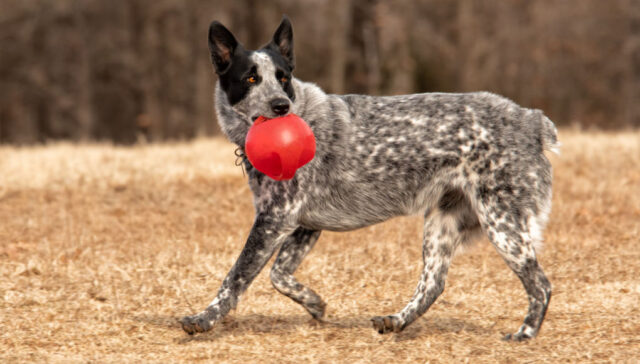
Table of Contents
Are you interested in an energetic crossbreed dog?
Do you want an intelligent and hardworking dog in your field?
Then allow me to introduce Texas Heeler!
The Texas Heeler dog is a crossbreed between the resilient Australian cattle dog and the strong herding instinct of Australian Shepherds.
High in stamina and energy, these dogs are eager to be your next working companions!
In this blog, I’ll be talking about everything you need to know about the Texas cattle dog breed—from its history, care, and living with them.
I’ll also be tackling the Texas Heeler personality and its temperament.
What traits should we expect from this Australian shepherd cattle dog mix?
Now, are you ready to learn more about Texas Heeler?
Let’s start!
Texas Heeler Breed History
The Texas heeler breed has a blurry history, just like most designer dogs.
Official records of the breed only surfaced in 1970 when Lucy Guynes first registered the breed with the Animal Research Foundation.
Despite that, experts argued that the breed had already existed beforehand.
Some even argued that the Texas heeler mix already existed even before the start of the 20th century.
It was in the 1800s to 1900s when farmers and ranchers needed a solution to the ever-growing problem of the harsh environment in Texas.
They also need a dog with specific traits to help them handle their vast cattle expansion.
So, American breeders experimented with crossbreeding most dog breeds in the country.
Eventually, they turned to the overseas dog breeds that the immigrants were importing.
With a couple of crossbreeding attempts, breeders have finally settled on what’s now known as Texas heeler.
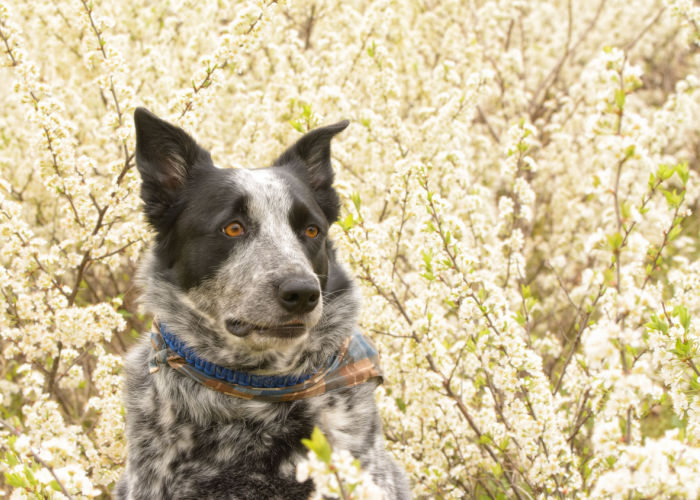
Texas Heeler Physical Trait
Just like its purebred parents, the Texas cattle dog is a gorgeous-looking dog breed.
But if you haven’t come across one yet, you won’t have a general idea of what Texas heeler breeds are.
That's why here are the physical traits that you need to look out for in a Texas heeler mix.
Weight and Height
Because Texas heelers are crossbred from Australian Cattle Dogs and Australian Shepherds, the size, weight, and height are yet to be standardized.
But a typical Texas heeler size falls in the medium dog size category.
Texas heelers have a compact muscular build that they use to sprint across the vast lands of pasture.
Sometimes, they tend to have a leaner appearance but still maintain their fairly muscular appearance.
Male Texas heelers are larger, taller, and heavier, reaching a height of 22 inches and a weight of up to 50 pounds.
Female Texas heelers, on the other hand, are smaller, only reaching a maximum height of 20 inches and a weight of 35 pounds.
Coat
While there are no standards for Texas heelers’ coats yet, their coats vary from short to medium-length coats.
Regardless of the coat length, Texas heelers have a double coat that protects them from the hot and cold weather of the southern and western states of the US.
But the most distinguishable feature of a Texas heeler is its coat color.
More often than not, Texas heelers are products of blue heeler type of cattle dogs and Australian Shepherds.
As a result, Texas heelers have a blue-black fur color alongside their white furs.
Sometimes, the white can appear gray from afar, making the dog darker than usual.
But what if it’s a red heeler who crossbred with the Australian Shepherd instead?
The resulting offspring would have brown, fawn, or orange-colored fur coats appearing alongside the blue and white furs.
Sometimes, the red heeler’s trait can dominate so that the fur coat colors would be fawn and white instead.
Distinct Features
Believe it or not, Texas heelers would still have distinct features that a lot of enthusiasts advocate in major kennel clubs for standardization.
Its most distinct feature is the pattern of its furs.
The majority of the Texas heelers have a speckled pattern of their blue-black fur on their dominant white fur coat.
From afar, you can also see some blue highlights in the dog’s speckled pattern, sometimes having brown speckles on its coat.
So if your Texas heeler came from a blue heeler, you could easily mistake its speckled coat for the Dalmatian spotted pattern.
If your Texas heeler came from a red heeler, chances are, your dog will look awfully similar to brown Dalmatians!
Luckily, Texas heelers have pointier ears than Dalmatian’s droopy ears, which distinguish the crossbred from the dog breeds.
Texas heelers can also look like their Border Collie ancestors, and it’s all because of the parent breed, the Aussie Shepherd.
Since the Border collie breed refined the Texas heeler’s purebred parent, the Australian shepherd, you can see some of the ancestor’s resemblance in the crossbred.
In fact, did you know that the Texas heeler mix can also have a solid blue-black coat on its back?
That’s right! Like the Border collie breed that we know, some Texas heelers can have a solid-looking dark coat that wraps around the crossbred’s back and saddle.
Texas Heeler Personality
Now, let’s talk about Texas heeler temperament and personality.
A Texas heeler has traits of a playful, friendly, and intelligent creature of the grassland.
Let’s discuss them all one by one.
Firstly, a Texas cattle dog is an amiable dog breed that can easily befriend strangers.
It’s only a matter of time before they become comfortable with you.
Texas heelers are also dogs known for their exceptional intelligence.
Because these dogs are smart, they effortlessly understand their task and enjoy completing them.
These dogs require a lot of stimulation, whether it’s a task to complete, playful activities, or exercise.
Texas heelers are also jolly breeds that treat the whole outside environment as their playground.
They even outlast their owners during playtime sessions!
RELATED: 20 Most Friendly Dog Breeds in the World
Are Texas Heelers Barkers?
Do Texas heelers bark a lot? Yes, Texas heelers are barkers, but they only bark when it’s necessary.
For them to properly direct the crowd, herding dogs need to consistently bark at the cattle flocks.
Texas heeler dogs are also protective of their territories.
They would stay alert and would bark at their suspecting intruder.
RELATED: Top 15 Small Dog Breeds That Don’t Shed Or Bark
Are Texas Heelers Aggressive?
Texas heelers are not aggressive dog breeds—unless, of course, you provoke them.
That being said, Texas heelers can get territorial.
They can be vigilant towards strangers, so you may want to keep your distance until they finally get used to your presence.
Living with a Texas Heeler
So, how does it feel living with a Texas Heeler?
For this kind of dog breed, you want an open area that’s close to nature.
It could be a farm, grassland, ranch, nearby forest, or even a foot of a mountain.
Any open field is fine as long as there’s enough space for your dogs to work their limbs and tire their energy out.
After all, a Texas heeler, along with its purebred parents, was bred for outside work.
Immersing your dog in nature’s beauty helps satisfy your dog’s need for stimulation.
But since Texas heelers are working dogs, they also get satisfaction from fieldwork and herding duties.
Are Texas Heelers Good Apartment Dogs?
Texas heelers are bad at being apartment dogs.
The small space that an apartment offers can leave the Texas heeler feeling congested.
You can, however, work around the dog’s need for outdoor exposure by visiting parks and routinely taking your dog for a walk.
RELATED: How to Train a Dog to Be an Apartment Guard Dog
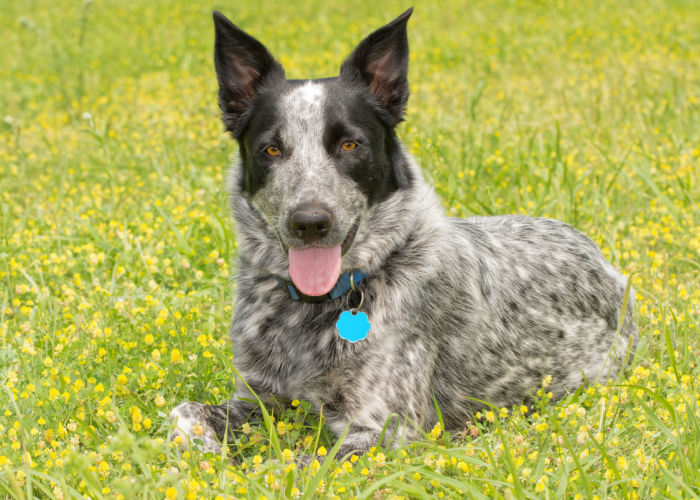
Texas Heeler Health
Despite being crossbreeds, Texas heeler dogs are healthy breeds, too!
Every dog owner has the responsibility to make sure that their dogs get the right kind and amount of care that they need for them to grow.
When under supervision, love, and care, a Texas heeler puppy can grow into a healthy adult herding dog.
And with that, here are health-related details that you need to know about Texas heelers to keep them in good shape.
Lifespan
Texas heelers reach their geriatric years or lifespan expectancy of 12 to 15 years.
Compared to other dog breeds, Texas heelers have a longer lifespan than larger dog breeds.
You can help a Texas heeler live longer by providing excellent care to dogs and addressing the dog’s health concerns when they arise.
Health Problems
Since Texas heelers come from two purebred dogs, they can also suffer from both of their parent’s breed-specific health problems.
These are Progressive Retinal Atrophy, Elbow Dysplasia, and Cataracts.
Progressive Retinal Atrophy (PRA) on Texas heelers:
- Is an inherited disease that causes sudden blindness in dogs
- Is the deterioration in the dog’s retina that starts with night blindness
- Can develop into eye cataracts
Giving Vitamin A to dogs helps delay the degeneration of the eye tissues in the retina.
Elbow dysplasia in the Texas heeler breed is:
- Abnormal development of the elbow joint in growing dogs
- A condition that can cause arthritis, joint pain, and even lameness
Elbow dysplasia has no cure, but therapies and medical prescriptions are in place to somehow relieve its pain.
Cataracts in Texas heeler dogs are:
- The cloudy lens of the dog’s eye resulted from clumped eye proteins that had degenerate
- Keeps light from entering the eye, essentially blinding them
Cataracts have no inherent cure, but surgery helps remove cloudy lenses and replace them with new ones.
Supplementing your dogs with Vitamin A helps minimize, or better, delay the degeneration of proteins in the eye.
Nutrition
Moving on, let’s talk about your dog’s appropriate nutrition.
While Texas heelers are not picky eaters, you shouldn’t feed them a lot just because they want to.
These crossbreeds are susceptible to becoming fat and obese if you don’t monitor their calorie intake.
Instead of focusing on calorie-dense diets, give your pet homemade dog food that’s rich in proteins and vegetables.
You can also buy reputable commercial dog foods and then give vegetables as a treat to your canine pal.
Texas Heeler Grooming
Unlike its purebred parents, a Texas heeler is a low-maintenance dog when it comes to fur care.
Since the dog breed has only short to medium-length coats, the crossbreed does not require a lot of grooming.
Now the question is, how do you care for Texas heeler breeds when it finally does need some grooming?
Seasonal Shedding
Unlike some dog breeds that are literally walking furry friends, Texas heeler dogs only shed moderately.
You can rest assured to know that your dog’s shedding won’t cover your home anytime soon.
Instead, you should watch out for the breed’s seasonal shedding.
This is when a dog with double-coat furs, like a Texas Cattle dog, will aggressively shed their undercoats to prepare for the next season.
Seasonal shedding usually happens before fall ends and right before the summer season starts.
Bath Time
Texas heelers don’t need frequent baths. Here’s why.
Weatherproof guard top coats protect these dogs against Texas' extreme conditions.
The same guard top coat helps the dog deflect dirt and debris away, which in turn keeps the dog’s coat clean.
So unless your dog smells stinky, there’s no absolute reason to bathe your Texas heeler.
That being said, you still want to bathe your dog, ideally, at least once a month.
This is to shed dead undercoat fur that might be clinging to the dog’s coat.
You also want to soak and refresh your dog in water when the weather outside becomes too hot.
Brushing Fur
Frequently bathing your Texas heeler mix is not necessary; you should brush its fur hair instead.
Depending if your dog is short-haired or medium-length, you can brush your dog’s fur at least twice or thrice per week.
Brushing your Texas heeler’s fur removes the clinging dead furs within the undercoat.
It also removes the dirt and debris that the guard top coat wasn’t able to block.
Paw Care
Don’t forget to take care of their paws and nails during grooming sessions!
Since Texas heelers love to gallop across the field, their long nails can accidentally prick them.
Be sure to check their nails and trim them with a dog clipper when it’s already unreasonably long.
Additionally, you can apply paw balm directly on their palm to prevent them from drying and cracking.
RELATED: Top 5 Best Paw Balms for Dogs, Paw Protection, Hyperkeratosis, Dry Skin
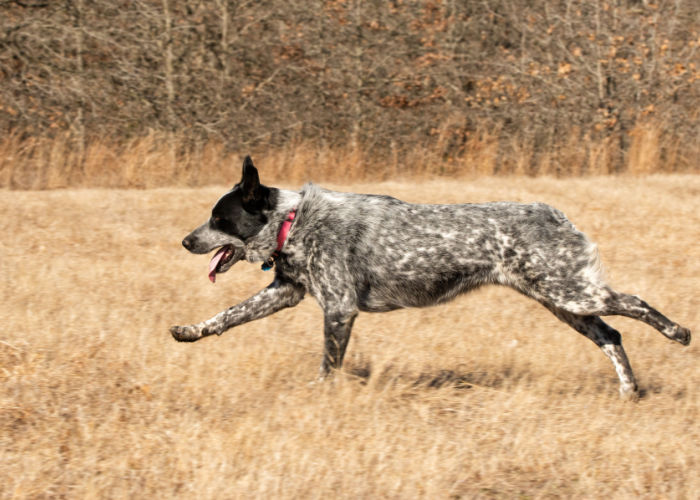
Texas Heeler Exercise
Texas heelers crave physical activity to stimulate their minds!
Gifted with extraordinary stamina, Texas heelers can sprint through the whole grazing land.
In fact, they are more than willing to do some physical activities with their owners in the form of exercise.
Short but high-intensity activities can stimulate your dog’s need to exercise.
But make no mistake; Texas heelers enjoy long and enduring activities, too!
With that, I recommend three physical activities that you can spend time with your Texas heeler mix.
These are hiking, dog park activities, and fetch.
Fetch
Fetch involves throwing a ball at a distance and letting the dog retrieve it.
This game is a perfect physical activity for Texas heelers since fetch involves your dog following cues while running toward the ball and back to you.
Hiking
Hiking refers to long walks, often going into the woods, following trails, and even trekking a path in the mountains.
This activity suits the Texas heeler mix since they’re fit for long and arduous activities.
It also helps stimulate your dog’s mind, as the dog is fond of immersing itself in nature.
Dog Park Activities
Taking your pet to a dog park is also good exercise for your dog.
Dog parks offer space for your Texas heeler mix to roam around, run, and play on the premises.
It’s also in the park where your dog can meet other dogs in the park and have fun doggy play dates together.
RELATED: Dog Park Rules and Regulations: What You Need To Know
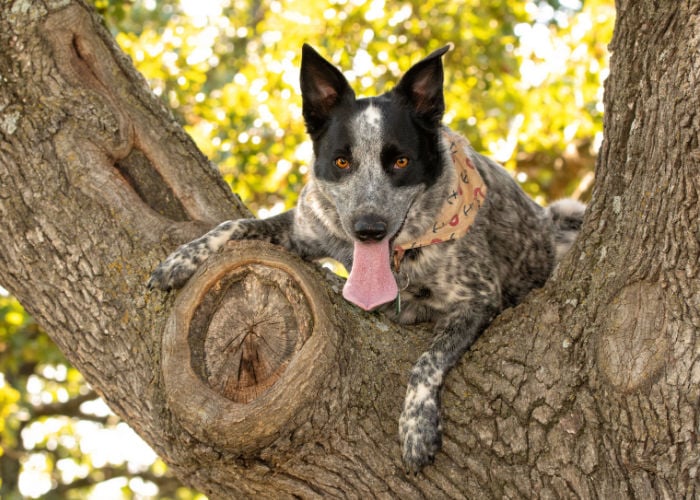
Texas Heeler Socialization
In terms of dog socialization, it’s not that hard to interact with a Texas heeler.
Sure, they may not want to be the spotlight of the group or the alpha in the pack of dogs.
But they definitely are great companion dogs that love interacting with us or other creatures.
Texas heelers are great family dogs as they are great in the field.
Since their predator instincts and their dominant traits are low, they are compatible with kids from ages four to twelve.
Texas heelers are loyal and protective of their owner, and the way you bond more with them is by doing work together and playing with them.
These fidos are also affectionate creatures that sometimes get cuddly with their owners on their rest days.
Texas Heeler Training
Based on the Texas Heeler breed’s trait, I recommend that you teach your dog the importance of crates.
Crate training allows an outdoor dog like a Texas heeler to be comfortable in small spaces and even in confinements.
It also teaches your dog to appreciate its crate as a familiar and safe space just for them.
On a similar note, teaching Texas heelers basic commands like sit and stay helps restrain their urge to sprint on a whim.
Finally, kind and affectionate crossbreeds like a Texas heeler excel in training when you include positive reinforcement in the session.
Are Texas Heelers Hard to Train?
You won’t find any major problems in handling Texas heelers.
This is because Texas heelers are obedient and intelligent dogs that can patiently go through the training.
They are also fond of training sessions because the activity stimulates their mind and senses.
But even if Texas heelers pose no trouble in their training, they’re still not a recommended breed for first-time dog owners.
Texas heelers require a lot of commands and cues before they can function well in their task.
And properly training these dogs is something that a first-time owner can’t implement in their dogs yet.
RELATED: 10 Worst Dog Breeds for First-Time Owners
Are Texas Heelers Rare?
The Texas heeler breed is still rare because not a whole lot of people want to own it yet.
And if the demand for the breed is low, there are only a few breeders who want to breed it.
One big reason for this is that most major kennel clubs like American Kennel Club haven’t acknowledged Texas heeler as a standard breed.
Currently, there are only a few reputable breeders that breed Texas heelers, and most of them are based in Texas.
You can also look for dog shelters and rescues for the breed if you want to adopt one.
Texas Heeler: Key Insights
Blue-tinged and unbothered, Texas heelers are your perfect companions in the field and your humble home.
The Texas heeler breed was the fruit of ranch owners’ quest to create a breed that could withstand harsh weather conditions in Texas.
As a result, this Australian shepherd cattle dog mix has long enduring stamina, resilient protective coats, and a hardworking personality.
If you want to own and keep this breed in your house, make sure to keep up with this dog’s energy.
Always interact with your dog through playtime and training to mentally stimulate them.
With enough care and love, even a crossbreed like a Texas heeler dog can be a fulfilling pet to keep around your house!
But wait!
If Texas Heeler is not your type of breed, then I highly suggest these mixed breeds below!












